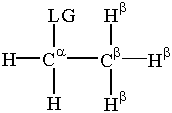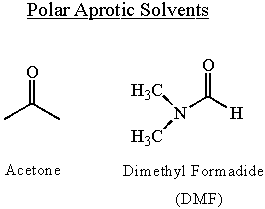Please wait while we process your payment
If you don't see it, please check your spam folder. Sometimes it can end up there.
If you don't see it, please check your spam folder. Sometimes it can end up there.
Please wait while we process your payment
Get instant, ad-free access to our grade-boosting study tools with a 7-day free trial!
Learn more



This site is protected by reCAPTCHA and the Google Privacy Policy and Terms of Service apply.
Create Account
Select Plan
Payment Info
Start 7-Day Free Trial!

Annual
2-49 accounts
$22.49/year + tax
50-99 accounts
$20.99/year + tax
Select Quantity
Price per seat
$29.99 $--.--
Subtotal
$-.--
Want 100 or more? Request a customized plan
You could save over 50%
by choosing an Annual Plan!

SAVE OVER 50%
compared to the monthly price!
| Focused-studying | ||
| PLUS Study Tools | ||
| AP® Test Prep PLUS | ||
| My PLUS Activity | ||
$22.49/month + tax
Save 25%
on 2-49 accounts
$20.99/month + tax
Save 30%
on 50-99 accounts
| Focused-studying | ||
| PLUS Study Tools | ||
| AP® Test Prep PLUS | ||
| My PLUS Activity | ||
No Fear provides access to Shakespeare for students who normally couldn’t (or wouldn’t) read his plays. It’s also a very useful tool when trying to explain Shakespeare’s wordplay!
Erika M.
I tutor high school students in a variety of subjects. Having access to the literature translations helps me to stay informed about the various assignments. Your summaries and translations are invaluable.
Kathy B.
Teaching Shakespeare to today's generation can be challenging. No Fear helps a ton with understanding the crux of the text.
Kay H.
No Fear provides access to Shakespeare for students who normally couldn’t (or wouldn’t) read his plays. It’s also a very useful tool when trying to explain Shakespeare’s wordplay!
Erika M.
I tutor high school students in a variety of subjects. Having access to the literature translations helps me to stay informed about the various assignments. Your summaries and translations are invaluable.
Kathy B.
Teaching Shakespeare to today's generation can be challenging. No Fear helps a ton with understanding the crux of the text.
Kay H.
Create Account
Select Plan
Payment Info
Start 7-Day Free Trial!
You will only be charged after the completion of the 7-day free trial.
If you cancel your account before the free trial is over, you will not be charged.
You will only be charged after the completion of the 7-day free trial. If you cancel your account before the free trial is over, you will not be charged.
Order Summary
Annual
7-day Free Trial
SparkNotes PLUS
$29.99 / year
Annual
Quantity
51
PLUS Group Discount
$29.99 $29.99 / seat
Tax
$0.00
SPARK25
-$1.25
25% Off
Total billed on Nov 7, 2024 after 7-day free trail
$29.99
Total billed
$0.00
Due Today
$0.00
Promo code
This is not a valid promo code
Card Details
By placing your order you agree to our terms of service and privacy policy.
By saving your payment information you allow SparkNotes to charge you for future payments in accordance with their terms.
Powered by stripe
Legal
Google pay.......



Please wait while we process your payment

Sorry, you must enter a valid email address
By entering an email, you agree to our privacy policy.
Please wait while we process your payment

Sorry, you must enter a valid email address
By entering an email, you agree to our privacy policy.
Please wait while we process your payment

Your PLUS subscription has expired
Please wait while we process your payment
Please wait while we process your payment

Leaving Groups and Nucleophiles
The leaving group is a component of every substitution and elimination reaction discussed in this SparkNote. As such, it makes sense to learn the characteristics of a good leaving group.
In any substitution or elimination reaction, electrons from a nucleophile,
carbon-hydrogen bond, or the solvent break a carbon-leaving group bond. Here
the leaving group is abbreviated as "LG."

There is a bit of terminology dealing with the leaving group important to
substitution and elimination. The α-carbon is the carbon atom
bonded to the leaving group. β-carbons are attached to the
α-carbon. The hydrogens attac hed to the β-carbon are called
β-hydrogens. This terminology is vitally important for our
discussion of substitution and elimination reactions.

Let's define a good leaving group as one that leaves easily. Then the effectiveness of a leaving group increases with the group's energetic stability after it has left. Thus a weak base is a better leaving group than a strong base. Likewise, a m olecule that is neutral after leaving is generally a better leaving group than one that is negatively charged after leaving.
Halides and the tosyl group (-OTs) are examples of commonly used leaving groups. In general, if the group is relatively stable after leaving the molecule with the C-LG bond's electrons, it's a good candidate for a leaving group.
The nucleophile is a key part of every substitution reaction. In these reactions, it is the group that "substitutes" for the leaving group. A nucleophile has a lone pair of electrons that makes up the molecule's business end. A polarizable nucleophile contribute more negative charge from its lone pair and has more punch than its non-polarizable fellow. On the same token, good nucleophiles tend to be negatively charged, but can also be neutral.
For nucleophiles that share the same attacking atom, nucleophilicity roughly follows
Bronsted basicity.

The iodide ion is a very good nucleophile that is only a weak base. Iodide is often a better nucleophile than ethoxide, but is a weak enough base to be a good leaving group.
Nucleophilicity is solvent dependent. Polar solvents allow nucleophiles to become highly polarized. They increase nucleophilicity. Protic solvents decrease nucleophilicity by hydrogen bonding to the nucleophile's lone pair end. The hydrogen bonds
blunt the molecule's nucleophilicity and must be broken
before nucleophilic attack can occur. For these reasons, nucleophilicity is greatest in polar, aprotic solvents.

Please wait while we process your payment





